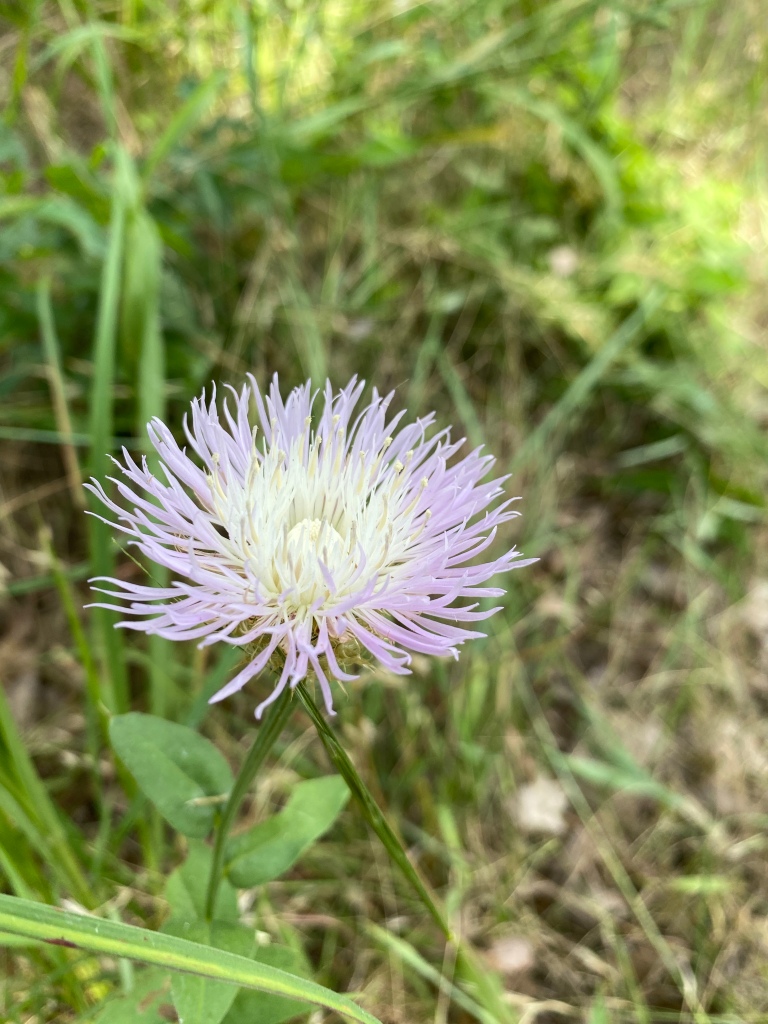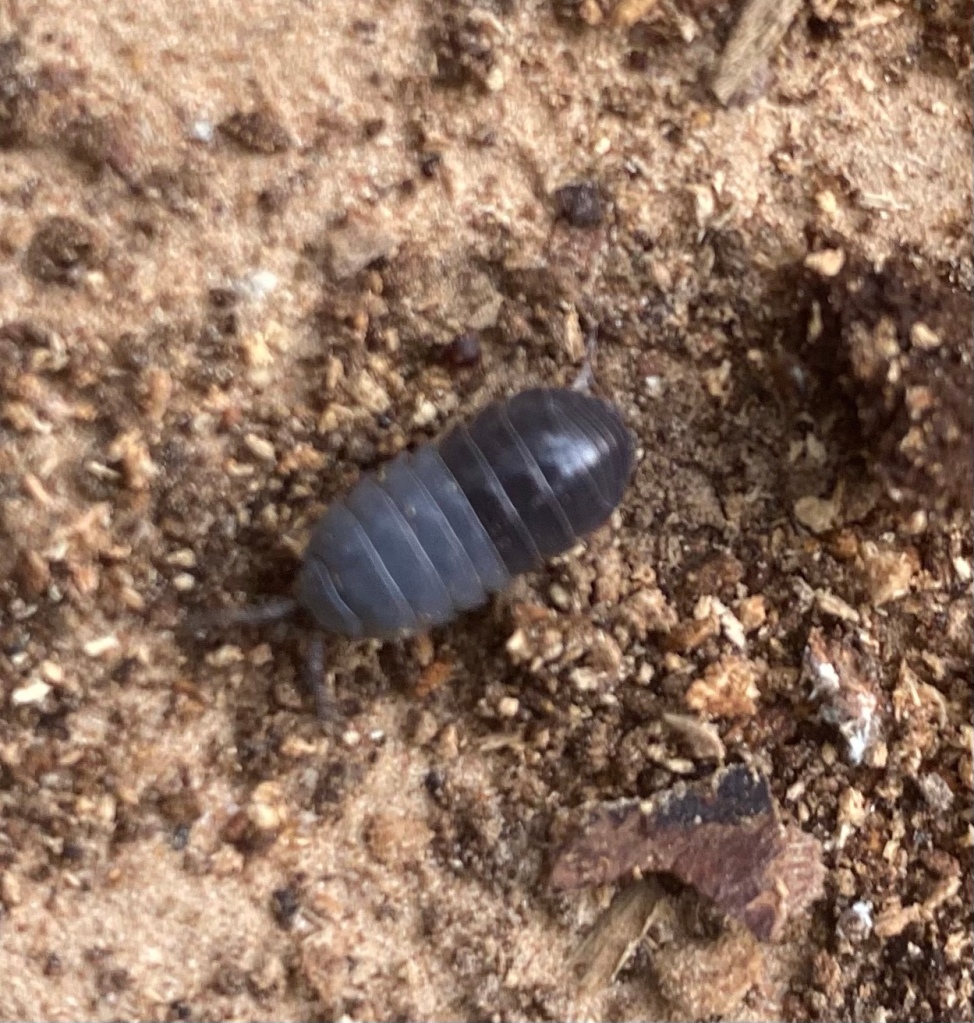I planted so many bask flower seeds and despite the massive spring rains, I have one, and only one bloom. Maybe more will burst forth as summer progresses. We can hope.


I planted so many bask flower seeds and despite the massive spring rains, I have one, and only one bloom. Maybe more will burst forth as summer progresses. We can hope.

It seems that it is the year of the pill bug. Rollie pollies are everywhere. Well, OK, everywhere that is outside and slightly moist and dark. So many more, though, than we’ve witnesses here before. We even found one that had a different colored front and back. I couldn’t find any studies or speculation on why it is two colors, but did find other photos of the same phenomena. Interestingly, the head is not always the lighter color. Sorry the photo is slightly blurry, by the time I zoomed in to check the photo, the land crustacean had scurried off to hide. There were other creatures in the decaying branch to catalog as well; a wolf spider with an eggs sac, several grubs, and a millipede.


There are actual cucumbers actually growing on my cucumber plant! The pollinators have been back to work! This is a bush variety that is supposed to produce small pickling cucumbers, so we’ll see how that goes. The rogue plant growing outside the container is still alive, but doesn’t have fruit (or the dog eats it, hm). The carrots and peas have all been nibbled by something, however the melon is vining and has a flower, so maybe some pollinators will be attracted there too.
Now that the rains have passed and we are spending more time outdoors, I have been test twining various materials.

At the lake, there are thick patches of bulrush. In the time between putting worms on hooks, I selected a stalk, split it into sections, and twined it together.

I took another bulrush stalk home and let it dry out, then rehydrated it and ran it through a pasta maker (because I don’t have a mangle, and this seemed to be the same concept), to flatten out the fibers. I did a small twined basket just to see if I understood the construction concepts. It is very rough, but at least recognizable as a basket.

Weeding the front garden, the long strands of grass caught my attention, so I twined some. Some of the blades were too brittle fresh to take twist, but a different species was more supple and was easy to twine. When it dried out the strands separated (but it is still relatively strong).

The irises in the front yard are starting to fade. I’ve read the wilted leaves make good weaving material, so I pulled some out and twined it. The supplest was easy to twine, but the leaves that had dried out more tended to break. Probably soaking them in water for a bit would bring them back (if I can believe what I’m reading).

The grass spiders have been particularly productive this summer and one attempted a web over a planting tray. Yes, I tried to twine it. I peeled up the web sheet (after making sure the spider had vacated), and twisted it up. It is a bit sticky and full of desiccated insect parts, which is quite gross, but I tried it.

It is possible to spin spider’s silk, but the effort is Herculean. There is a stunning cape made of spider silk from Madagascar and apparently the crafters collected a million spiders and extracted the silk, rather than gathering webs. The project took over three years and numerous crafters. Here is an article.

I went fruit crazy at the grocery store and picked up cantaloupe, fresh pineapple, nectarines, and peaches. We chopped them all up into fruit salad (which was quite good despite being quite orange), and saved a slice of cantaloupe for the chickens.